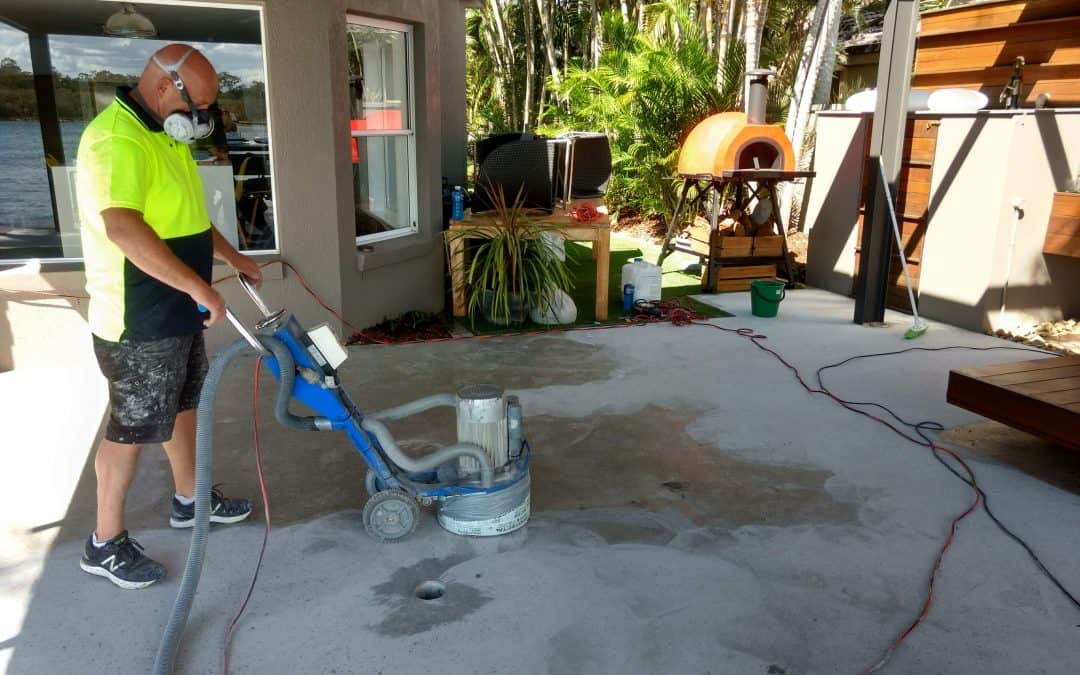The difference between a small job and a big job is the surface preparation time.
Time is money and a key component of keeping costs in check. When a tradie prices up a job, the price is made up of the following formula: Price = Scope + Time + Resources.
Any changes to one or more of these components that make up the price affect the job costs and profitability of the job. Therefore, finding efficient and effective ways to do a job saves us time and when we save time we save money!
However, preparation is the bane of existence for lots of tradies because they don’t expect it to be so time-consuming. You can easily devote an entire day or more to preparation – all before even starting the actual work.
When you need to protect outdoor surfaces by masking off areas, you need a good product and a good product, if you are going to save time. If masking up is done properly the whole job can be done without a mess, splatter or overspray on a surface that you have to clean up afterwards.
For example, when applying a concrete resurfacing coating you can be sure that overspray is inevitable. While the applicator can use their own plastic, newspaper or boards to mask up, you’ll make your life easier if you use a construction grade outdoor masking film like Mask Up Outdoors from Barefoot Concrete.
What Is Masking Film?
Masking film is not the same thing as a tarp. Tarps are not meant to be form-fitting or to create a paintable edge.
If you need to walk on or cover items, consider using an industrial-grade drop sheet or dropcloth.
Pre-taped masking film comes in long rolls of 50m and widths from 550mm to 1400mm. You will find two types of masking film:
- The first kind of masking film is called a pre-taped masking film. It is represented by Mask Up Outdoors from Barefoot Concrete and has a strip of 36mm masking tape running along one edge of the film.
- The second kind has no tape, relying instead on the plastic’s static-cling properties to hold it in place. You can still use masking tape to tape the plastic sheet, however, the pre-taped masking film may cost more but it will save you time.
Choose the Right Size
The pre-taped film combines two steps: taping and draping. Firstly, you apply the masking tape, and then you pull up or pull down the plastic sheeting (draping) and tag it with masking tape to hold it in place.
Pre-taped masking film usually has static cling properties to cling to the surface you are protecting, however, due to wind and other factors, you will still need to use some masking tape so it doesn’t blow off when you are working or if its a bit windy.
Remember, too, that bigger is not always better. Using oversized masking film doesn’t just result in waste – you also need to cut or tape up all of that excess, which can be a pain when dealing with this extremely thin film that always wants to cling to your hands and arms.
Ask Barefoot Concrete for the sizes they have in stock as you will find one that best fits your requirements.
Where to Use
Interior Walls
A common way to use masking film is primarily when painting indoors like a ceiling. You can run the adhesive edge along the top of the wall, unfold the film downward, pressing it flat against the wall, tagging it with masking tape. Then begin to paint.
Windows and Doors
Masking film works great on windows because it sticks well to the glass. Masking film will rarely match the exact size of windows and doors. But all you need to do is run the adhesive strips down two sides of the area to be masked. If you have at least six centimetres of overlap, it’s not necessary to tape between the two sections (though it can never hurt).
Other Areas
Remember that masking film isn’t just for painting right to the edge. Often you need to cover cabinets and flooring to protect them from an ambient spray. Masking film works great for this.
Outdoors
A construction-grade masking film is perfect for masking up outdoors and where the tape needs to stick to rough, uneven, dirty or damp surfaces.
Large Areas
If you have large areas to mask, it’s nearly impossible to use newspaper or cardboard. Masking with masking film consumes far less time than masking with something else because, with film, you’re only dealing with a single sheet of film. With newspapers or cardboard, it can take five or six sheets to properly cover an area.
Barefoot Concrete recommends Mask Up Outdoors, a high quality, construction grade, multi-purpose pre-taped masking film. The product is suitable for masking up both indoor and outdoor areas in diverse weather conditions and is fit for purpose across many different industries.
For an excellent article on surface preparation, go to the Concrete Network.

